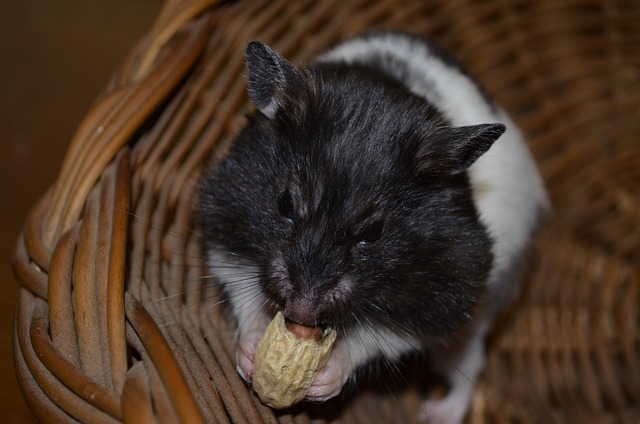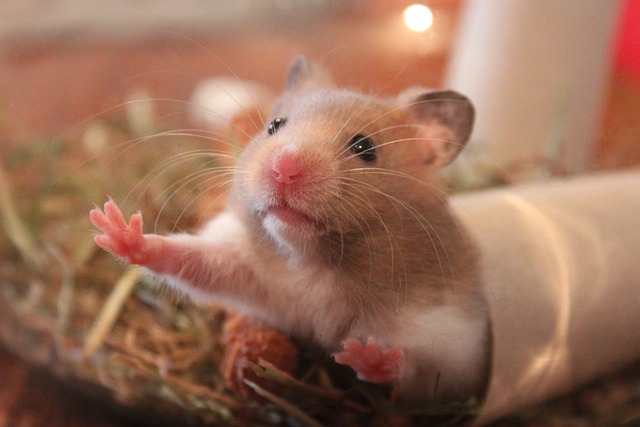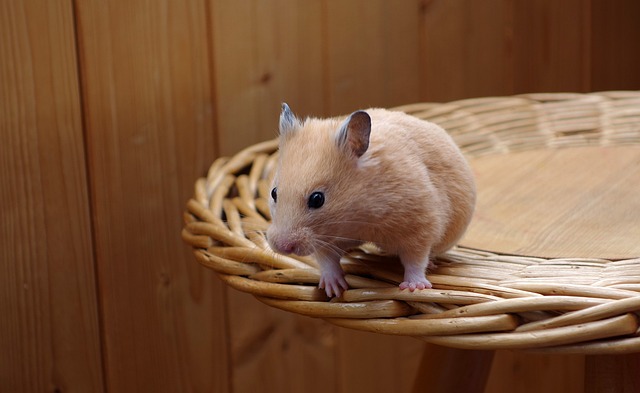Can Syrian Hamsters Live Together – Hamsters.pk
Understanding Syrian Hamsters’ Solitary Nature
Syrian hamsters, also known as golden hamsters, are popular pets known for their cute appearance and relatively low maintenance. However, it is crucial for potential hamster owners to understand that these furry creatures are inherently solitary animals. In the wild, Syrian hamsters live alone and only come together briefly for mating purposes. This solitary nature is deeply ingrained in their behavior and should be respected when keeping them as pets.
Territorial Instincts
Syrian hamsters are highly territorial and will fiercely defend their living space from other hamsters. In the wild, they establish their own territories, which they mark with scent glands to communicate their presence to other hamsters. When kept as pets, this territorial instinct remains strong, and they require their own dedicated living space to feel secure and comfortable.
Aggression Towards Other Hamsters
Due to their territorial nature, Syrian hamsters can become aggressive when housed with other hamsters, even littermates. This aggression can lead to serious fights, resulting in injuries or even death. In some cases, the dominant hamster may relentlessly bully or attack the subordinate hamster, causing significant stress and harm.
Stress and Health Concerns
Housing Syrian hamsters together can lead to chronic stress, which can manifest in various ways, such as decreased appetite, lethargy, and a weakened immune system. Stressed hamsters are more prone to illnesses and may develop behavioral issues, such as excessive grooming or bar chewing. Providing them with a solitary living environment is essential for their overall well-being and happiness.
Exceptions to the Rule
In rare cases, some Syrian hamsters may be able to cohabitate peacefully, particularly if they are young littermates that have never been separated. However, this is not the norm, and it is crucial to monitor their behavior closely for signs of aggression. If any fighting or bullying occurs, the hamsters should be separated immediately to prevent harm.
Providing Appropriate Living Conditions
To cater to their solitary nature, Syrian hamsters should be housed in individual cages that are spacious enough to accommodate their needs. A cage with a minimum size of 24 inches by 12 inches and at least 12 inches tall is recommended. The cage should include a variety of enrichment items, such as hiding spots, tunnels, and chew toys, to keep the hamster mentally stimulated and physically active.
In conclusion, understanding and respecting Syrian hamsters’ solitary nature is crucial for their well-being and happiness as pets. Housing them separately and providing them with appropriate living conditions will ensure that they thrive and lead healthy, stress-free lives.

Risks of Housing Syrian Hamsters Together
Syrian hamsters, also known as golden hamsters, are often mistakenly thought to be social animals that enjoy the company of their own kind. However, this is far from the truth. In reality, housing Syrian hamsters together can lead to a multitude of problems and risks that can seriously impact their health and well-being. In this article, we will explore the various risks associated with keeping Syrian hamsters in the same living space.
Aggressive Behavior and Fighting
One of the most significant risks of housing Syrian hamsters together is the potential for aggressive behavior and fighting. These solitary creatures are highly territorial and will fiercely defend their living space from other hamsters. When forced to share a cage, they may engage in violent fights, which can result in serious injuries such as wounds, broken limbs, or even death. The stress caused by constant conflict can also lead to a weakened immune system, making the hamsters more susceptible to illnesses.
Dominance and Bullying
In some cases, one hamster may establish dominance over the other, leading to a situation where the subordinate hamster is constantly bullied and harassed. The dominant hamster may prevent the subordinate from accessing food, water, or comfortable sleeping areas, causing the latter to experience chronic stress and anxiety. This bullying can cause the subordinate hamster to become withdrawn, lose appetite, and develop behavioral issues such as excessive grooming or bar chewing.
Resource Competition
Syrian hamsters have specific resource requirements, such as food, water, and space. When housed together, they may compete for these limited resources, leading to stress and potential malnutrition. Even if multiple food bowls and water bottles are provided, the dominant hamster may monopolize them, leaving the subordinate hamster without adequate sustenance. This resource competition can also extend to hiding spots, toys, and other cage amenities, further exacerbating stress levels.
Unintended Breeding
Housing male and female Syrian hamsters together can result in unintended breeding, which can be problematic for several reasons. Firstly, the female hamster may become pregnant at a young age before her body is fully developed, leading to health complications. Secondly, the stress of pregnancy and caring for a litter can be overwhelming for the mother, especially if she is already experiencing stress from living with another hamster. Additionally, the sudden increase in the hamster population within the cage can lead to overcrowding and further aggression.
Difficulty in Monitoring Health
When Syrian hamsters are housed together, it can be challenging to monitor their individual health and well-being. If one hamster becomes ill or injured, it may go unnoticed as the attention is divided between multiple animals. This delay in identifying and addressing health issues can have serious consequences and may even lead to the spread of contagious diseases among the hamsters.
In conclusion, the risks of housing Syrian hamsters together far outweigh any potential benefits. These solitary animals thrive when given their own dedicated living space, free from the stress and aggression that comes with cohabitation. By providing Syrian hamsters with individual cages, appropriate resources, and plenty of enrichment, pet owners can ensure that their furry friends lead happy, healthy, and stress-free lives.
Exceptions to the Rule: When Syrian Hamsters May Cohabitate
Syrian hamsters, also known as golden hamsters, are well-known for their solitary nature and territorial behavior. In most cases, housing these hamsters together is not recommended due to the high risk of aggression, fighting, and stress. However, there are some rare exceptions to this rule where Syrian hamsters may be able to cohabitate successfully. In this article, we will explore these exceptional circumstances and the precautions that should be taken to ensure the hamsters’ well-being.
Young Littermates
One of the most common exceptions to the solitary housing rule is when dealing with young littermates. Syrian hamsters born from the same litter and raised together from a young age may be able to cohabitate peacefully, as they have grown accustomed to each other’s presence. However, it is crucial to monitor their behavior closely as they reach maturity, typically around 8-12 weeks of age. At this point, hormonal changes and the development of territorial instincts may lead to aggression, requiring separation.
Same-Sex Pairs
In some cases, same-sex pairs of Syrian hamsters may be able to live together, particularly if they are introduced at a young age and have never been separated. This is more likely to be successful with females, as they tend to be less aggressive than males. However, it is essential to provide a spacious cage with multiple hiding spots, food bowls, and water bottles to minimize resource competition and potential conflicts.
Constant Monitoring and Separation Preparedness
Even in the above exceptions, it is crucial to constantly monitor the hamsters’ behavior for signs of aggression or bullying. This includes observing their interactions during playtime, ensuring that both hamsters have access to food and water, and checking for any injuries or signs of stress. If any aggression is noticed, the hamsters should be separated immediately to prevent further harm. It is advisable to have a spare cage ready for quick separation if needed.
Gradual Introduction and Neutral Territory
If attempting to introduce Syrian hamsters that have previously been housed separately, it is essential to do so gradually and in neutral territory. This can be done by placing the hamsters in a separate, unfamiliar enclosure, such as a bathtub or a large playpen, with plenty of hiding spots and toys. The hamsters should be supervised closely during these introductions, and any signs of aggression should be met with immediate separation.
Individual Personalities
It is important to remember that every Syrian hamster has its own unique personality, and some may be more tolerant of company than others. Some hamsters may display a more docile temperament and be less prone to aggression, making them more suitable for cohabitation. However, this is not a guarantee, and owners should always prioritize the safety and well-being of their pets.
In conclusion, while Syrian hamsters are generally solitary animals that thrive when housed alone, there are some rare exceptions where cohabitation may be possible. These include young littermates, same-sex pairs, and hamsters with particularly docile personalities. However, it is crucial to approach these situations with caution, constantly monitor the hamsters’ behavior, and be prepared to separate them if necessary. Ultimately, the well-being and safety of the hamsters should always be the top priority when considering any exceptions to the solitary housing rule.
Creating a Safe and Comfortable Environment for Solo Syrian Hamsters
Syrian hamsters, also known as golden hamsters, are solitary animals that thrive when housed alone. To ensure that your Syrian hamster leads a happy and healthy life, it is crucial to create a safe and comfortable living environment that caters to their specific needs. In this article, we will discuss the key factors to consider when setting up a habitat for your solo Syrian hamster.
Choosing the Right Cage Size
One of the most important aspects of creating a comfortable environment for your Syrian hamster is providing them with a spacious cage. A cage that is too small can lead to stress, boredom, and behavioral issues. The minimum recommended cage size for a single Syrian hamster is 24 inches by 12 inches, with a height of at least 12 inches. However, larger cages are always better, as they provide more space for exploration, exercise, and enrichment.
Selecting Appropriate Bedding Material
Syrian hamsters love to burrow and create cozy nests, so it is essential to provide them with a deep layer of bedding material. Avoid using cedar or pine shavings, as these can cause respiratory problems. Instead, opt for safe and absorbent options such as paper-based bedding, aspen shavings, or hemp bedding. The bedding should be at least 6 inches deep to allow for comfortable burrowing and nesting.
Providing Essential Cage Accessories
To create a stimulating and comfortable environment, include various cage accessories that cater to your Syrian hamster’s natural behaviors. Some essential items include:
- Exercise Wheel: Syrian hamsters are active creatures that require daily exercise. Provide a solid-surface exercise wheel with a diameter of at least 8 inches to prevent back strain.
- Hiding Spots: Include multiple hiding spots, such as wooden hideouts, ceramic caves, or even small cardboard boxes, to give your hamster a sense of security and privacy.
- Chew Toys: Syrian hamsters have continuously growing teeth that need to be worn down. Offer a variety of chew toys made from safe materials like untreated wood, loofah, or rice pops.
- Food and Water Dishes: Provide a shallow, sturdy food dish and a water bottle with a metal spout to ensure your hamster has easy access to fresh food and water.
Maintaining a Clean and Hygienic Habitat
Regular cleaning is crucial to maintain a hygienic living space for your Syrian hamster. Spot-clean the cage daily by removing soiled bedding, discarded food, and droppings. Once a week, do a thorough cleaning by replacing all the bedding and washing the cage and accessories with mild soap and warm water. Ensure everything is completely dry before reassembling the habitat.
Placing the Cage in a Suitable Location

When deciding where to place your Syrian hamster’s cage, choose a quiet, draft-free area away from direct sunlight and air conditioning vents. Hamsters are sensitive to extreme temperatures and loud noises, so it is essential to create a stable and peaceful environment. Keep the cage away from other pets, such as cats or dogs, to prevent stress and potential injuries.
In conclusion, creating a safe and comfortable environment for your solo Syrian hamster involves providing a spacious cage, appropriate bedding, essential accessories, and regular cleaning. By considering these factors and placing the cage in a suitable location, you can ensure that your furry friend lives a happy and healthy life. Remember, a well-designed habitat not only meets your hamster’s physical needs but also contributes to their overall well-being and quality of life.










